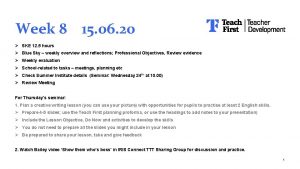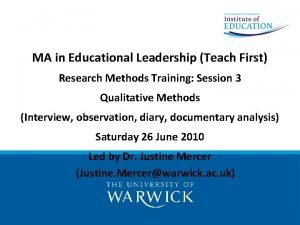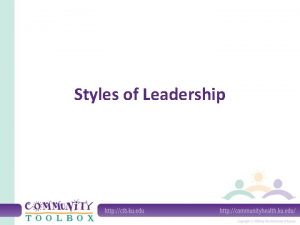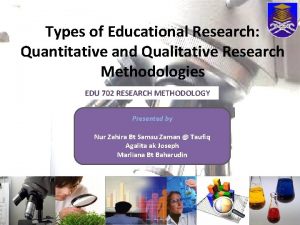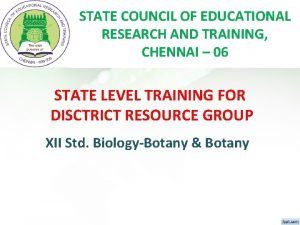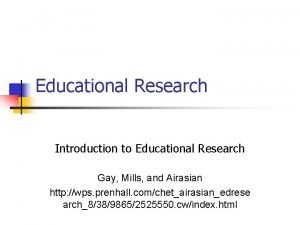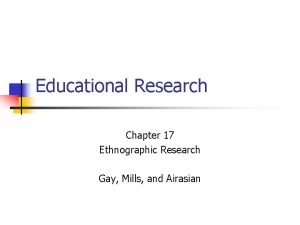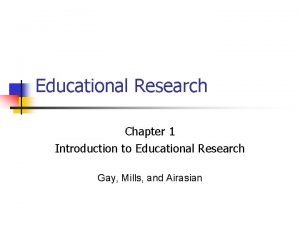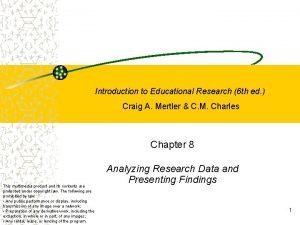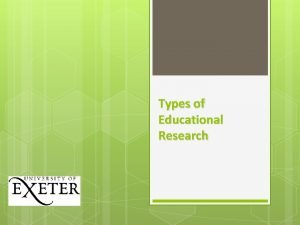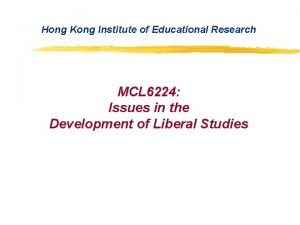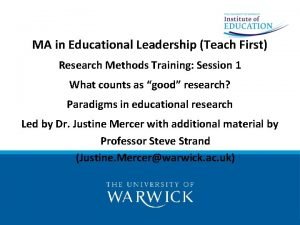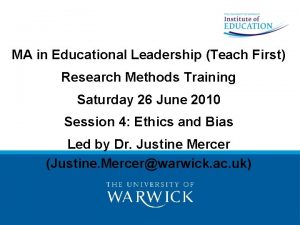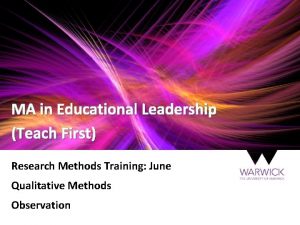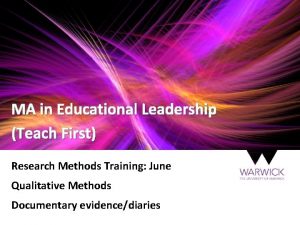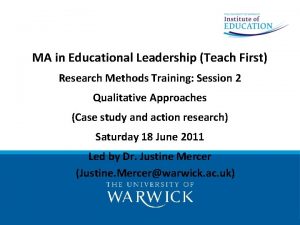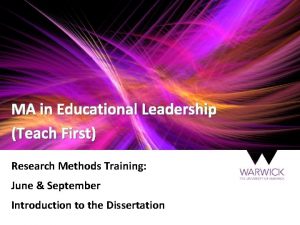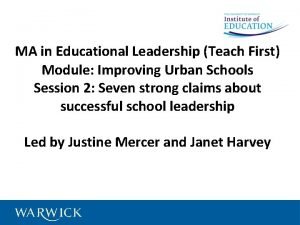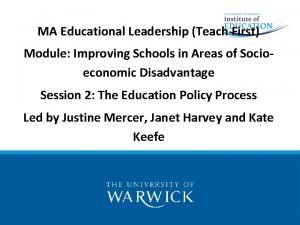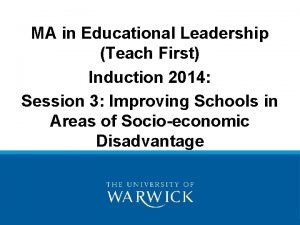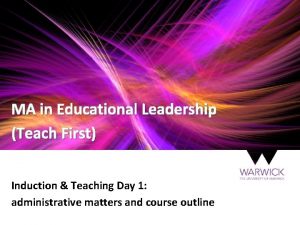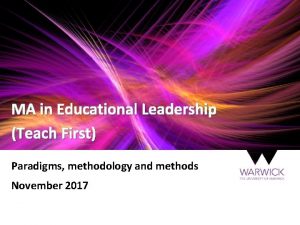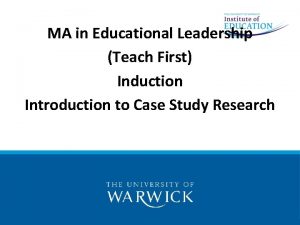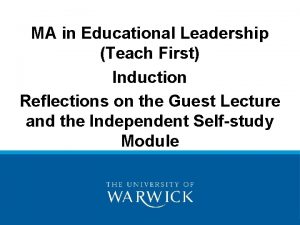MA in Educational Leadership Teach First Research Methods

















- Slides: 17

MA in Educational Leadership (Teach First) Research Methods Training: Session 3 Qualitative Methods (Interview, observation, diary, documentary analysis) Saturday 26 June 2010 Led by Dr. Justine Mercer (Justine. Mercer@warwick. ac. uk)

Activity 1: Interviews Form small groups in which at least one person conducted interviews for their Improving Urban Schools assignment. Discuss: a) What different types of interview can be conducted? b) In what circumstances are interviews an appropriate data collection tool? In what circumstances are they not appropriate? c) How do you get good data from an interview?

Interviews Structured – oral questionnaire Semi-structured – probes and prompts Unstructured – requires considerable skill • Individual / Pairs • Group interview – interviewer + individuals = tighter structure • Focus group – moderator + consensus = loose 6 to 12 participants (more than 8 is demanding).

Interviews Face-to-face Telephone Email Notes and/or transcript

Interviews Advantages • Allows for in-depth discussion • Can address potentially sensitive topics Disadvantages • Great potential for bias • Requires high level of skill • Not generalizable • Very time-consuming

Interviews - points to consider • The degree of structure / openness of the interview • The balance of control between the interviewer and respondent • How to put the interviewee at ease • How much prior preparation you want the respondent to do • How to record the interview

Focus Groups • Potential for discussion to develop • Group dynamics / consensus • Dynamics between people of varied opinions • Personal matters will not emerge

Activity 2: Observation Form small groups in which at least one person used observation for their Improving Urban Schools assignment. Discuss: a) Who was observed doing what and why? b) What kind of observation schedule was used? c) When is observation an appropriate data collection tool and when not?

Observation Participatory / Non-participatory Overt / Covert Observation Schedules? ORACLE = Quantitative and very tight DSLTP = Open

Diaries kept by others Advantages • An extra pair of hands • Investigator is invisible • Wealth of description • Extends the scope of the research Disadvantages • Too much to analyze • Diarists may be atypical or have their own agenda • Variation in depth and detail • Language is not standardised

Commissioned diaries The diarists must be clear what they are being asked to do, and why. If not fully in sympathy with the task, they will not complete it properly.

Activity 3: Documentary Evidence In small groups, discuss: a) What type of documents might be analyzed as part of your research? b) What are the advantages and disadvantages of documentary research? c) What issues need to be considered?

Documentary evidence “Documentary research relies primarily on the use of available printed data as a source of evidence. In your own small scale project, your use of documents is likely to be only one of a range of research approaches” (Johnson, 1994: 25). School charter

Records and documents Minutes of meetings Letters, memoranda Written curricula Course outlines Timetables Financial accounts

Documentary evidence Advantages • • Low cost Access to past events Unobtrusive Useful supplement to other data Disadvantages • Document ‘fit’ with research objectives • Insider knowledge needed • Not value neutral

Documentary evidence - issues • Authenticity and credibility – when was this written? For what purpose? • Representativeness – how typical of the sources we are investigating is this one item? • Is the author biased? Do we trust what we read? • How close is the author to the events described? How accurate is the description?

Analysis of qualitative data Organisation of data into patterns and categories - coding Interpretation: looking for relationships and linkages Focus: relate it back to the original purpose of the study
 Teach first planning proforma
Teach first planning proforma Teach first documentary
Teach first documentary Npl certificate in educational leadership
Npl certificate in educational leadership Direct and indirect wax pattern
Direct and indirect wax pattern Leadership methods
Leadership methods Transactional vs transformational
Transactional vs transformational What is adaptive leadership style
What is adaptive leadership style Enthusiastic beginner disillusioned learner
Enthusiastic beginner disillusioned learner First educational conference 1947
First educational conference 1947 Qualitative research design
Qualitative research design Preference for specific design control for procedural bias
Preference for specific design control for procedural bias State council of educational research and training
State council of educational research and training Educational research gay
Educational research gay Ethnographic research
Ethnographic research Educational research and development
Educational research and development Introduction to educational research mertler
Introduction to educational research mertler Types of educational research
Types of educational research Hong kong institute of educational research
Hong kong institute of educational research
